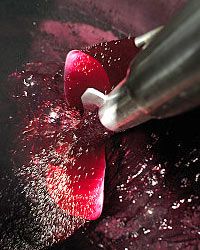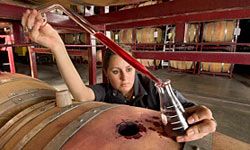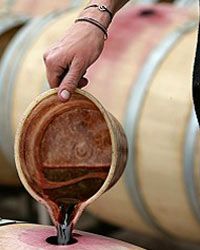
Brewing and winemaking supplies
We offer a huge selection of high quality products to the home brewing connoisseur. With over 4 years of expertise in the craft brewing business, we feel confident we can help make your next brew a big success
Brewer's Equipment & Accessories
Full Equipment Kits
– Carboys and Accessories
– Glass or Plastic ( new & used)
– 1 Gallon, 3L, 11.5L, 23L
Fermenting Pails and Lids
- Pails ( new and used)
- Air locks (new and used)
-Bungs (new and used)
–Bottle Washers & tree
–Brushes and Spoons
– Siphon Rods and Hoses
-Funnel's, straining bags
-Chesses cloth
Corkers and Capper s
Corks, crown caps, gallon caps
Pet caps'
Filtering Equipment
– BV MiniJet & filters
- BV Superjet filters
- 6 round filter pads
Wine Additives
– Acids
– Yeasts (beer, wine, cider, mead, super yeast)
- Dextrose
–Wine conditioner, tannins, and more!)
– Oak (various)
– Processing Additives
– Finings and Clearing agents
Cleaners and Sanitizers
– Sani-Brew
– One Step
– Powdered Brewery Wash (PBW)
– Star San
– Star Clean
– Sulphites
Testing Equipment
– Acid Testing Kits
– Triple Scale Hydrometers
– Proof Hydrometers
– Thermometers
– Vinometer
Bottles
-wine bottles (750 and 375ml)
- beer bottles (Glass and plastic)
-Gallon jug
- Wine bags
10 Common Wine Additives
Contents
- Sulfites
- Yeast
- Enzymes
- Wine Acids
- Grape Tannins
- Potassium Sorbate
- Clarifiers
- Yeast Nutrients
- Lactic Acid Bacteria
- Sweeteners
10: Sulfites
Check the label of just about any wine in the United States, and you will find the words, "Contains Sulfites." Sulfites kill bacteria and undesirable yeast (more on that in a moment!) and help to preserve wine by protecting it from oxidation. All wines contain at least some level of sulfites, which are a naturally occurring compound found in grapes and other foods. The warning on the label is added for the benefit of those with a sulfite allergy or sensitivity.
Sulfites are used to sanitize equipment and may be added at any of several different points in the winemaking process including the following:
- Harvesting -- when grapes may be sprinkled with sulfites before they are brought to the winery.
- Crushing -- where sulfites prevent the grapes from fermenting with naturally occurring yeasts.
- Fermentation -- to stop the fermentation process at a desired point.
- Bottling -- to extend the wine's shelf life by preventing it from interacting with oxygen.
9: Yeast

Yeasts are a critical ingredient in the winemaking process, since they do the actual work of converting the sugar in grapes to alcohol through the process known as fermentation. Naturally occurring airborne yeasts, known to winemakers as ambient yeasts, can be found everywhere, and while any of them will convert sugar to alcohol, not all of them will work at the same rate or produce the desired effect. For this reason, many winemakers use sulfites to kill any ambient yeast, then add strains of specially cultured wine yeasts to build the desired flavors and textures in the finished wine. Unlike ambient yeasts, the cultured yeast strains behave in a reliable and predictable way, ensuring that the vintner can reproduce the same results in batch after batch.
8: Enzymes
If you've ever read the ingredients list on a jar of jam or jelly, you've probably seen the phrase "fruit pectin." Pectin is a substance in fruit that binds cells together, helping to form the fruit skin. Winemakers use pectic enzymes to break down the cell walls, break the grape skins apart and extract more juice from the grape. Pectic enzymes are also used to clarify the wine and remove cloudiness or "haze" caused by leftover pectins.
Enzymes can also be used to modify the flavor and aroma of the finished wine. An enzyme called lysozyme (found naturally in egg whites and human tears, among other things!) is sometimes used to control the process of malolactic fermentation, which takes place when bacteria convert the grape's natural, tart-tasting malic acid into milder, softer tasting lactic acid.
What are enzymes?
Enzymes are proteins that cause or accelerate chemical reactions. Our bodies use enzymes to digest food, we use enzymes in our homes to get our dishes and laundry clean, and winemakers use enzymes to improve the flavor and appearance of wines.
7: Wine Acids
The acid content of a wine helps to determine its color, intensity, brightness and flavor, among other characteristics. While all grapes contain a certain amount of naturally occurring acid, winemakers check the pH level of the wine throughout the fermentation process and often refine their products by adding tartaric acid, malic acid, citric acid or an acid blend containing some combination of the three. These wine acids lend a tart flavor to the wine and contribute to its character, balance and texture -- or mouthfeel. Ascorbic acid, which acts as a natural preservative by preventing oxidation, is sometimes added during filtration, just prior to bottling.
Check the pH!
The acidity of a liquid is described by something called its pH level. Pure water, with a pH of around 7, is considered neutral. Liquids with a pH lower than 7 are considered acidic; those with a pH above 7 are considered basic or alkaline. So the higher the pH, the less acidic (or more alkaline) the liquid. The lower the pH, the higher the acidity.
6: Grape Tannins
Tannins are found naturally in grape seeds, stems and skins, as well as in wine barrels made from certain woods. They contribute to a wine's texture, flavor and body, and because they prevent wine from reacting with oxygen, they also act as a natural preservative. Tannins are present in just about all red wines, since the grapes remain in their skins during fermentation, but they must be added to whites, since those are fermented with the skins removed. Additional grape tannins may be added to red wines to enrich the wine's flavor and body or to enhance its color. Tannins create a sharp, astringent effect on the tongue and a dry feeling on the sides of the mouth.
5: Potassium Sorbate

Potassium sorbate is a stabilizer used to slow yeast growth and "lock down" the fermentation process. It prevents yeast from acting on any sweeteners that may be added to the wine after the initial fermentation is complete. Whenever potassium sorbate is used, a sulfite must be added at the same time or a compound called geraniol may develop. That's the same stuff that gives geraniums their distinctive smell, and it's also used to keep mosquitoes away. So unless you'd like your fine wine to double as a ladies' fragrance or an insect repellent, you'll probably want to follow the directions in your home winemaking kit closely for this one.
4: Clarifiers
We've already mentioned that pectic enzymes can help to clear up the haze in your wine, but they only work on the residue that fruit pectins leave behind. Several other clarifiers and fining agents are used to clean up yeast and other stray particles by helping sediments drop out of the wine so that they can be easily strained out or simply left at the bottom of the barrel (or bottle).
And while the job of clarifiers is to, well, clarify, you'd never guess it by hearing what they're made of. One common fining agent, called bentonite, is a fine clay made from volcanic ash that works by attracting positively charged particles. Others, such as Sparkolloid (made from fossilized algae) or chitosan (made from the exoskeletons of crustaceans) are positively charged, meaning that they attract and help to isolate negatively charged sediments. No one fining agent can clean up your wine on its own; instead, they work with one another (and with other wine components) to get the job done.
3: Yeast Nutrients
Wait, aren't the grapes (or, more specifically, the sugars in the grapes) supposed to be the yeast nutrient? Yes … but sometimes that's not enough. Yeast nutrients are often added to wines during fermentation to ensure that the desirable wine yeasts have enough of the right kind of food to promote a rapid start, steady reproduction and complete fermentation.
Used in conjunction with the right yeast strain, the right proportion of grapes to yeast and the proper fermentation temperature, yeast nutrients can help to ensure that the finished wine is not too sweet. Yeast nutrients are a must for non-grape wines (sometimes called "country wines"), such as peach or berry wines.
2: Lactic Acid Bacteria
Yes, we just added sulfites to eliminate all the unwanted bacteria in our wine, but the right kind of bacteria can actually be a good thing for certain wines. Lactic acid bacteria are sometimes added when a wine is too acidic, or when a winemaker wants to convert the tart malic acid naturally found in grapes to smooth lactic acid, which gives the wine a softer mouthfeel. Lactic acid bacteria also help to stabilize the wine, ensuring that you won't find a bottle of vinegar when you first pop the cork.
1: Sweeteners

There are essentially two ways to achieve the desired sweetness in a wine: One is to use a strain of yeast that will stop reproducing when the wine reaches a certain alcohol content, leaving any unfermented sugars to sweeten the wine. The other is to ferment the wine completely (allowing the yeast to consume all sugars), then sweeten the wine with sugar or another sweetener. Sweeteners come in the form of simple syrup (sugar dissolved in water), fruit juices and juice concentrates made from grapes and other fruits, and even honey. Typically a stabilizer such as potassium sorbate or sorbic acid is added at the same time as the sweetener to prevent any remaining yeast from converting the extra sugar into more alcohol. brewing and winemaking supplies home brew supplies wine making supplies